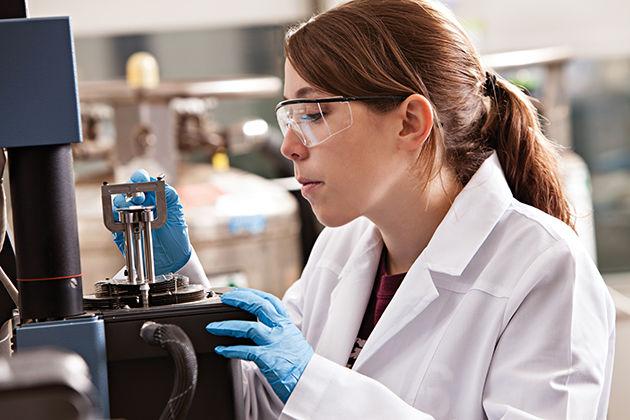A research team in the Department of Biomedical Engineering was awarded a $1.9 million research grant by the National Institute of Health in February and plans to use the funds for ongoing research.
Associate professor in the Department of Biomedical Engineering Melissa Grunlan heads the research team that is continuing a project to develop a polymer to fill and heal cranial bone defects that occur from an injury, birth defect or surgery.
The project has been going on for almost five years, and Grunlan said she is excited to continue moving forward with eventual clinical testing in the future.
“It’s very exciting because it comes after many years of hard work to prove the concept behind what they ultimately rewarded for us,” Grunlan said. “It’s exciting to be able to move forward with this work and toward a clinically viable product.”
Grunlan’s research team consists of Brian Saunders and Roy Pool, professors in the College of Veterinary Medicine and Biomedical Sciences, Michael Moreno, Department of Mechanical Engineering and Mariah Hahn, professor from the Rensselaer Polytechnic Institute along with undergraduate, graduate and doctoral students.
“It’s very rewarding because federal funding is so competitive and our group has been working toward this goal for a number of years,” Saunders said. “It’s great and at the same time when you are given an award of this nature you see how much work you have ahead of you, so it actually causes us to have a reality check and look ahead at the goals to pursue for the project.”
The polymer the team is developing will temporarily support healing and will dissolve, leaving behind a healed bone defect. The material can be shaped to each person’s bone defect with little work once the material is exposed to a warm saline solution.
“What we are hoping is that this material will be a new way to treat those defects in a better and easier way,” Grunlan said. “It’s going to hopefully be a better option for individuals to be able to treat these types of defects.”
Ph.D. student Lindsay Woodard has worked on the project since the beginning and said it has a lot of potential.
“They are really excited about it, and we just think it is very promising, very practical and easy to understand the benefits it could have,” Woodard said.
Saunders said this grant and the project shows how A&M continues to work toward making an impact in medicine and biomedical engineering.
“This demonstrates the success of a complementary collaborative team,” Saunders said. “Our project will demonstrate that Texas A&M is continuing to advance toward achieving their goals of becoming a leader in biomedical and regenerative medicine, research and therapy.”
Grunlan said A&M is working toward a better future for others and this research project only adds to the continued improvement.
“If Texas A&M could be a part of how changing how patients are treated who are dealing with these diseases, that is a huge societal impact,” Grunlan said. “That’s what Texas A&M is all about and what students are passionate about as well.”
Research team receives $1.9 million
March 27, 2017
Photo by Provided
Lindsay Woodard
0
Donate to The Battalion
$2065
$5000
Contributed
Our Goal
Your donation will support the student journalists of Texas A&M University - College Station. Your contribution will allow us to purchase equipment and cover our annual website hosting costs, in addition to paying freelance staffers for their work, travel costs for coverage and more!
More to Discover










